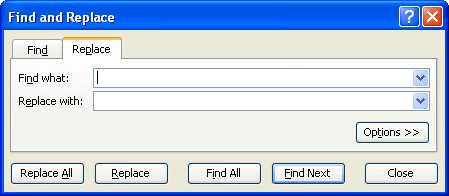Please Note: This article is written for users of the following Microsoft Excel versions: 97, 2000, 2002, and 2003. If you are using a later version (Excel 2007 or later), this tip may not work for you. For a version of this tip written specifically for later versions of Excel, click here: Relative Worksheet References when Copying.
Written by Allen Wyatt (last updated March 27, 2020)
This tip applies to Excel 97, 2000, 2002, and 2003
When you copy a formula from one cell to another, Excel automatically updates any relative references within the formula based on the target that is receiving the formula. For instance, assume that cell B7 contains the following formula:
=B6+A7
If you copy this formula to cell D22, Excel automatically updates the references so they are relative to cell D22, as shown here:
=D21+C22
When you are copying formulas from one worksheet to another, and the formula contains a reference to a previous worksheet, Excel doesn't do this type of formula updating—at least not on the worksheet names. For instance, let's say you have three worksheets named January, February, and March—in that order. On the February worksheet you have the following formula:
=January!B7*1.075
If you copy this cell to the March worksheet, Excel will automatically change the B7 reference (if necessary), but it won't change the sheet name (January, which was "one less" than the sheet on which the formula first occurred) to the adjusted relative sheet name (February, which is "one less" than the sheet to which the formula is being copied).
If you have only a few worksheet references in your copied formulas, it is fairly easy to just edit the formulas so they reference the proper worksheet. The task can quickly become a nightmare, however, if you have dozens or hundreds of such references.
The solution is to do a simple search-and-replace operation in Excel, as outlined here:

Figure 1. The Replace tab of the Find and Replace dialog box.
The formulas in the worksheet are now updated so they refer to the proper worksheet.
Notice in steps 4 and 5 that what you are searching for and replacing it with is not the straight month names. This is done because the month names alone (January, February, etc.) could easily occur in other places in the worksheet without being part of a formula. You don't want to change these instances, so the extra characters are included to help narrow down the search.
ExcelTips is your source for cost-effective Microsoft Excel training. This tip (2946) applies to Microsoft Excel 97, 2000, 2002, and 2003. You can find a version of this tip for the ribbon interface of Excel (Excel 2007 and later) here: Relative Worksheet References when Copying.

Professional Development Guidance! Four world-class developers offer start-to-finish guidance for building powerful, robust, and secure applications with Excel. The authors show how to consistently make the right design decisions and make the most of Excel's powerful features. Check out Professional Excel Development today!
Have you ever copied information from one worksheet to another, only to have the information you paste not look the way ...
Discover MoreEdit a group of workbooks at the same time and you probably will find yourself trying to copy information from one of ...
Discover MoreWhen creating a workbook, you may need to make changes on one worksheet and have those edits appear on the same cells in ...
Discover MoreFREE SERVICE: Get tips like this every week in ExcelTips, a free productivity newsletter. Enter your address and click "Subscribe."
2015-09-23 02:52:10
Mike
Referencing values from a former month I took a different approach:
If you name your worksheet according to an Excel date format you can calculate a reference to the specific sheet.
Here a short sample of how I did it:
Assume A1 contains the name of the current worksheet (e.g. "Jan 2015")
=MID(CELL("filename"),(FIND("]",CELL("filename"))+1),50)
Set A2 to the calculated previous month as =DATE(YEAR(A1),MONTH(A1)-1,1) resulting in "Dec 2014".
Set A3 to =CONCATENATE("'",TEXT(A2,"MMM JJJJ"),"'!") and name this cell "PrevSheet".
With the formula =INDIRECT(PrevSheet&"xx") you are able to access any cell "xx" of the previous worksheet.
2015-09-19 10:16:52
AQ
This is an excellent solution, especially when inserting new worksheets that need referencing to other worksheets.
Thanks again
Got a version of Excel that uses the menu interface (Excel 97, Excel 2000, Excel 2002, or Excel 2003)? This site is for you! If you use a later version of Excel, visit our ExcelTips site focusing on the ribbon interface.
FREE SERVICE: Get tips like this every week in ExcelTips, a free productivity newsletter. Enter your address and click "Subscribe."
Copyright © 2026 Sharon Parq Associates, Inc.
Comments